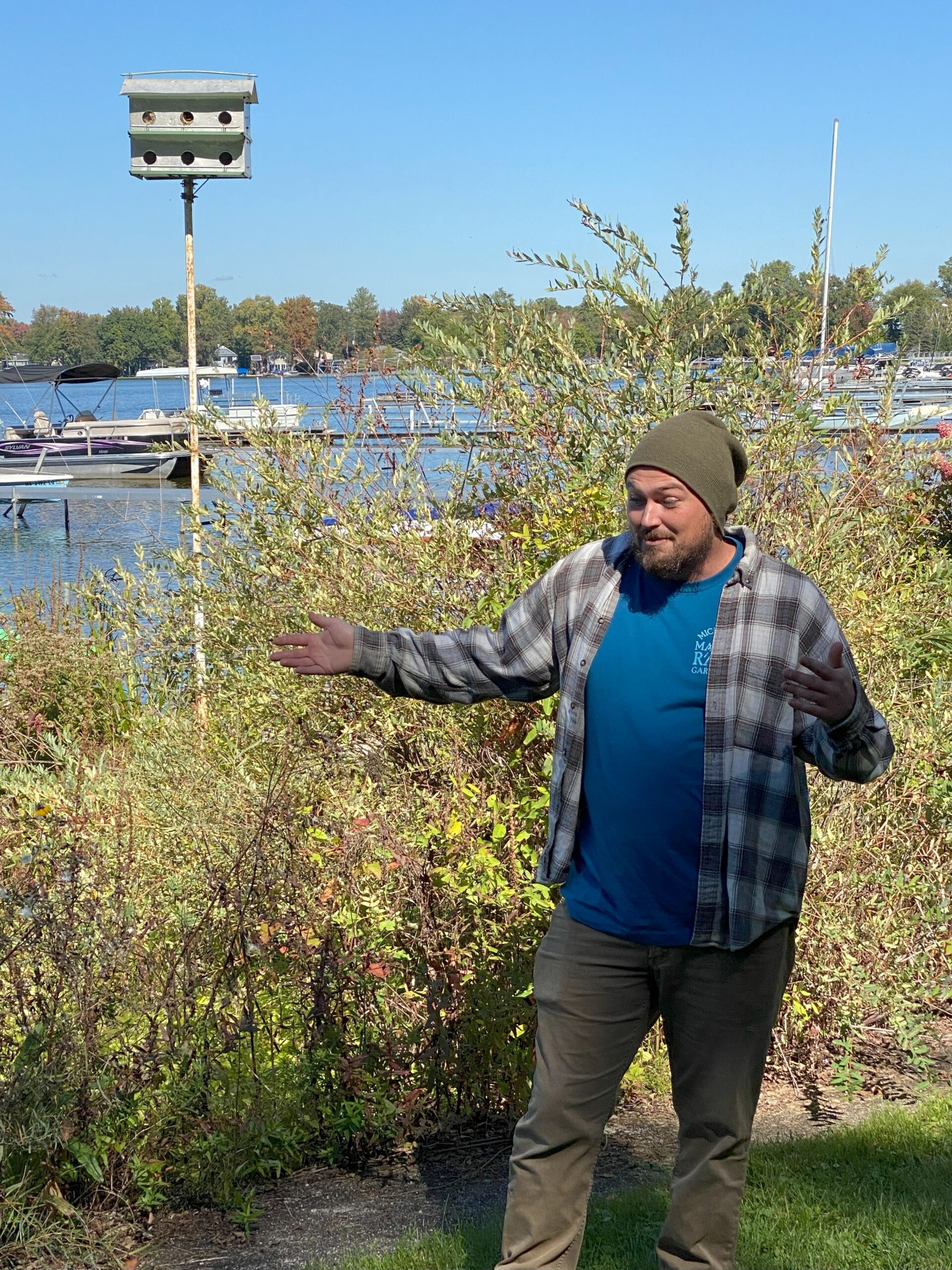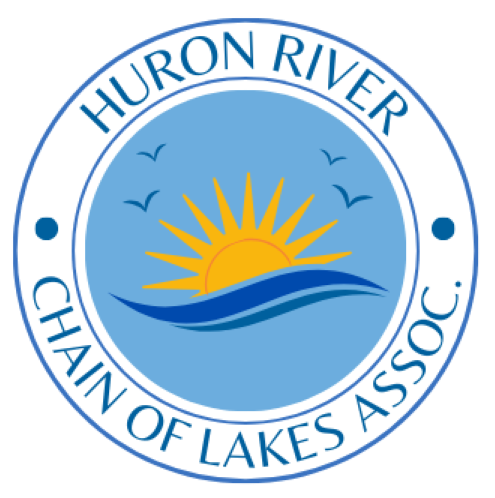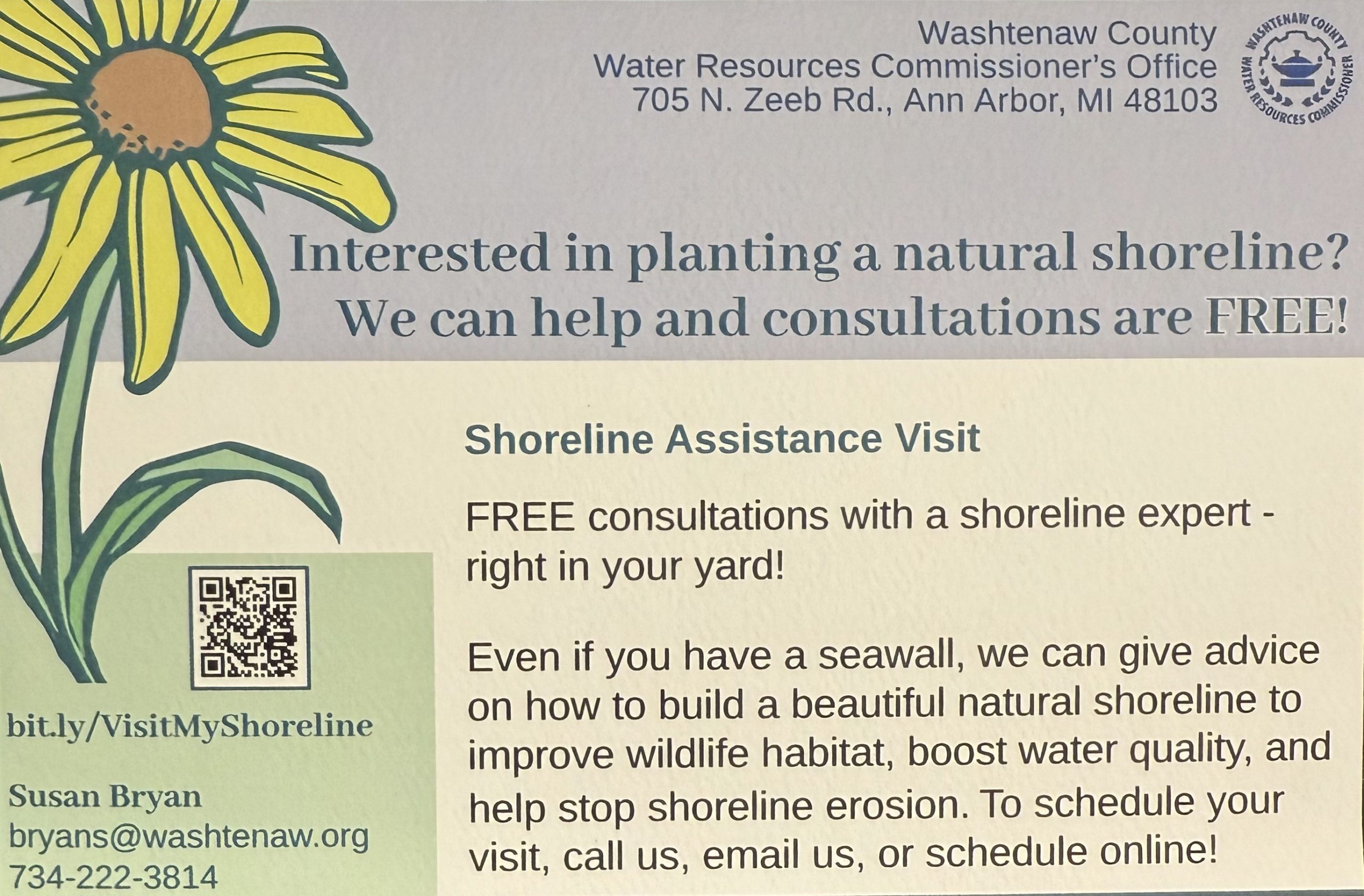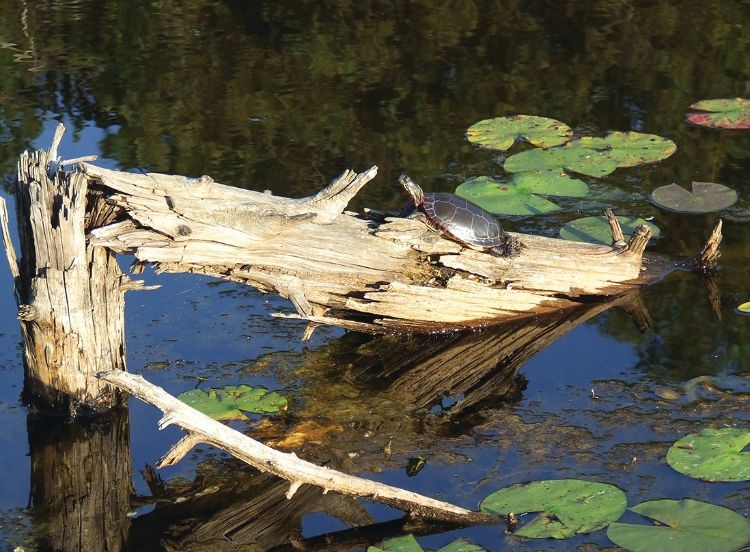Natural Shoreline
Preserve or Create a Shoreline Garden
Buffer Zones with Native Plants, Shrubs, and Trees:
- Prevent the flow of nutrients promoting weed and algae growth into the water along the shoreline.
- Act as a barrier against erosion, protecting the integrity of the shoreline.
- Deter geese and their droppings from entering your yard, minimizing potential issues.
Role of Native Vegetation Buffers:
- Offer crucial habitat for fish and wildlife, supporting biodiversity.
- Contribute significantly to the overall health of the ecosystem surrounding lakes.
Significance of Naturalizing Shorelines:
- Ranked as one of the most impactful measures for enhancing water quality in lakes.
- Reflects a proactive approach to environmental conservation and habitat preservation.
HRCOLA sponsors and will pay for a free, on-site consultation for HRCOLA members. More Information Here.
More information here: Smart Gardening for Shorelands: Smart Waterfront Plants to Enhance Your Shoreline – Gardening in Michigan
And here: Be a Shoreland Steward – Michigan Shoreland Stewards
And here: Michigan Natural Shoreline Partnership,
Use Native Plants
Buffering Against Nutrient Runoff:
- Specialized native plants create buffer zones, effectively preventing nutrient runoff into the water.
- Mitigate the risk of excessive weed and algae growth, maintaining a balanced aquatic ecosystem.
Erosion Control:
- Robust native shrubs and trees play a vital role in controlling shoreline erosion.
- Their deep roots anchor the soil, preventing loss of valuable shoreline habitat.
Geese Deterrence and Water Quality:
- Serve as a natural deterrent for geese, minimizing disturbances and droppings in your yard.
- Contribute to improved water quality by reducing the introduction of contaminants.
Critical Habitat for Local Wildlife:
- Native vegetation buffers provide essential habitats for Michigan’s diverse fish and wildlife.
- Support the unique ecosystems and contribute to the overall biodiversity of the region.
Promoting Environmental Health:
- Naturalizing Michigan shorelines is a proactive step to enhance the environmental health of lakes.
- Supports the broader conservation efforts in preserving Michigan’s rich natural heritage.
Native Plant List: Southern Lower Peninsula – Native Plants and Ecosystem Services
Shoreline Managment: Shoreline Management
Schedule a FREE Shoreline Consultation Visit
Washtenaw County Offers a Free Shoreline Assistance Visit for residents of Washtenaw County
- Give them a call at 734-222-3814 and schedule your visit today!
Preserve or Establish Shallow Water Plants
Plant native species in the water near the shore. Native shallow-water plants work as filters cleaning surface water as it enters our lakes and stabilize the lake bottom reducing erosion. They are an essential, but often overlooked, part of a lakes natural system.
Info here: Smart lake gardening: Planning Your Nearshore Garden – Gardening in Michigan
More info here: Wildlife Action Plan: Littoral Zones
Place Fish Sticks Near the Shore
Fallen trees are a common and necessary feature of natural shorelines. Below the surface of the water they provide crucial fish cover and home for water insects. Above the water they provide resting wildlife such as birds and turtles.
Portage Lake is lucky to be the home of Michigan’s largest shoreline protection and restoration project with the placement of fish sticks along the north side of the lake by Natural Shorelines Forever, a local non-profit. Natural Shorelines Forever now offers assistance to others on the Huron River Chain of Lakes who want to put fish sticks on their shoreline. Their projects show that fish sticks can share the shore nicely with boating and swimming areas – even for properties with limited shorelines.
For more information go here: Natural Shorelines Forever

Free Shoreline Garden Consultation
Free, on-site consultations are available to Huron Chain of Lake shoreline property owners who are members of HRCOLA :
Please note, all shoreline alterations below the high water mark require a permit from the Michigan Department of Environment, Great Lakes, and Energy (EGLE).
For more information: EGLE Shoreline Alteration Permit






